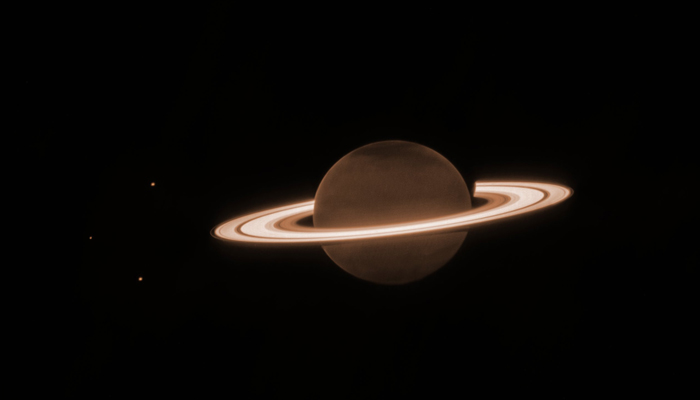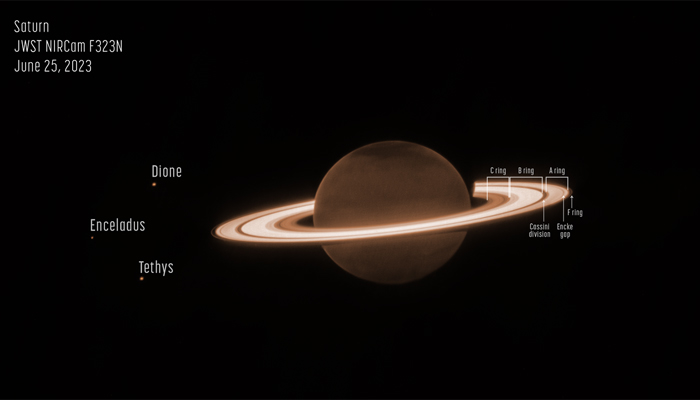Never seen before: James Webb telescope clicks Saturn in full splendour
The current picture would allow scientists to study the planet in more detail alongside the planet’s faint moons
July 04, 2023

The James Webb Space Telescope's (JWST) first near-infrared pictures of Saturn and its rings have left astronomers of the world absolutely awestruck owing to their out-of-this-world details, Nasa said.
In the image, it can be seen that Saturn is appearing dark as the planet absorbed the sunlight due to methane gas, but a spectacular view is created by its bright rings which Nasa termed the “unusual appearance” of the planet.
Saturn’s moons Dione, Enceladus and Tethys dot the left side, while the Cassini division, Encke gap and rings A, B, C and F are shown on the right side. The Cassini division is the largest of the gaps in Saturn’s ring system.
Nasa said the near-infrared observations of the ringed planet are a first for the highly sensitive telescope which — at 1.5 million kilometres (nearly 932,000 miles) from Earth — observes the universe with wavelengths of light longer than those of other space telescopes.
The image was taken with Webb’s Near-Infrared Camera, known as NIRCam, as part of a Webb program that involves several exceptionally deep exposures of Saturn, according to the US space agency.
The current picture would allow scientists to study the planet in more detail alongside the planet’s faint moons.
Unexpectedly, the large, diffuse structures in the northern hemisphere do not follow the planet’s lines of latitude, so this image is lacking the familiar striped appearance that is typically seen from Saturn’s deeper atmospheric layers,” said Nasa.

Differences in the looks of Saturn’s northern and southern poles are normal, said Nasa adding that the northern region experiences summertime while the southern hemisphere is exiting winter darkness.
But the darker-than-usual appearance of the northern hemisphere could be from “an unknown seasonal process affecting polar aerosols in particular,” Nasa stated.
While methane absorbs almost all of the sunlight falling on the atmosphere at such a distant location from the sun, the planet's icy rings still appear bright in the image, explained Nasa.
Earlier this year, the Webb telescope detected an enormous plume of water vapour erupting from the surface of Saturn’s moon Enceladus — regarded as an ocean world due to its makeup and distinctively icy outer shell.
According to scientists from Nasa, the plume, extending about 6,000 miles out from the moon's south pole and toward Saturn's rings, was especially interesting because of the role it may play in feeding the broader Saturnian water system.
Last month, scientists have been able to detect a vital element — necessary to host life and biological processes on Earth — in the interior ocean of Saturn’s moon Enceladus, lighting up hopes of finding potential life on the gaseous giant’s natural satellite.
They detected a considerable concentration of phosphorus — an important factor for living beings on Earth — was identified in ice crystals ejecting from the moon.
The researchers earlier confirmed the chemical compounds and minerals associated with hosting life.











